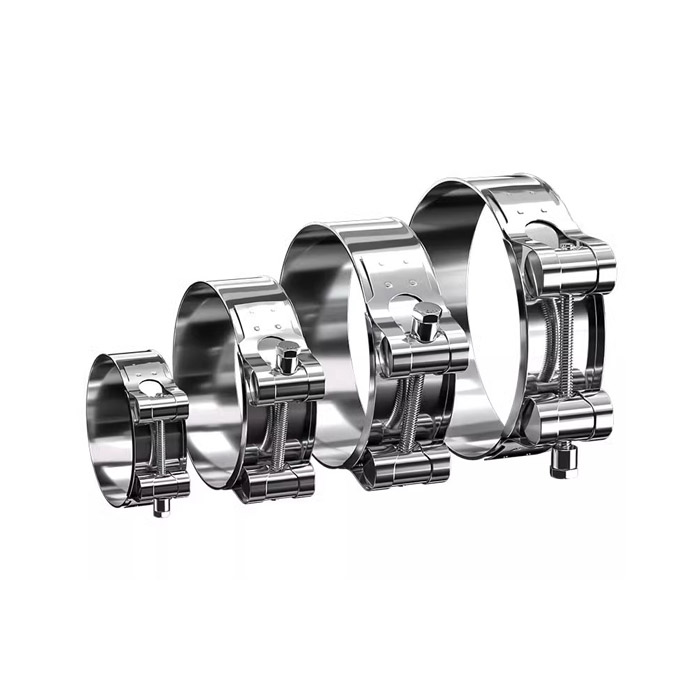- Phone:+86-17331948172 +86-0319-8862898
- E-mail: inquiry@puxingclamp.com
Nov . 18, 2024 11:48 Back to list
Dismantling Hose Clamps in Manufacturing Facilities for Efficient Maintenance and Repair
Understanding the Function and Importance of Loosen Hose Clamps in Various Factories
In the world of manufacturing and industrial processes, ensuring that components are securely connected and capable of withstanding pressure and movement is crucial. One often overlooked yet vital component in this context is the hose clamp. Specifically, the process of loosening hose clamps is fundamental for maintenance, replacement, or adjustments in various factories. This article explores the significance of hose clamps, the circumstances under which they are loosened, and best practices for doing so safely and effectively.
The Role of Hose Clamps
Hose clamps are devices used to secure hoses onto fittings, preventing fluid leakage and maintaining pressure within a system. They come in various types, including worm gear, spring-tensioned, and T-bolt clamps, each designed for specific applications. In factories where chemicals, fluids, or gases are transported through hoses, the integrity of these connections is paramount. Loosening a hose clamp can become necessary for multiple reasons, including hose inspection, repair, or replacement.
When to Loosen Hose Clamps
Hose clamps may need to be loosened during routine maintenance checks when wear and damage are suspected. For instance, hoses exposed to high pressures or temperatures can degrade over time, resulting in the possibility of leaks. Furthermore, if modifications are being made to the machinery or system—such as upgrading a component—loosening hose clamps allows access to the hoses and fittings involved.
Additionally, in factories that deal with corrosive substances, periodic inspections are essential. Loosening the clamps may be part of a strategy to replace hoses that have become compromised due to chemical exposure. This proactive approach helps prevent catastrophic failures that could lead to safety hazards and costly downtime.
Best Practices for Loosening Hose Clamps
When it comes to loosening hose clamps, certain best practices should be observed to ensure safety and effectiveness. First and foremost, always wear appropriate personal protective equipment (PPE), such as gloves and safety goggles. This precaution protects against potential hazards, especially when working with pressurized systems or hazardous materials.
loosen hose clamp factories

Step-by-Step Process
1. Release Pressure Before loosening any clamps, ensure that the system is depressurized. This can prevent fluid from escaping suddenly, which could lead to injury or spills. Depending on the factory’s setup, this may involve closing valves or following specific depressurization protocols.
2. Identify the Clamp Type Different hose clamps require different loosening methods. Worm gear clamps typically use a screwdriver or socket wrench, while spring clamps may need special pliers to release tension. Knowing the type of clamp is crucial for using the correct tool.
3. Gradual Loosening When loosening a clamp, do so gradually. This approach minimizes the risk of sudden movements or damage to the hose and fittings. In high-pressure systems, a slow release also helps control any residual fluids.
4. Inspect the Hose and Clamp Once loosened, inspect both the hose and the clamp for signs of wear, corrosion, or damage. If repairs or replacements are necessary, this is the right time to address those issues.
5. Securely Re-tighten After performing any required maintenance or replacement, ensure that the clamp is securely re-fastened to the appropriate torque specification. This step is vital for preventing leaks when the system is returned to operation.
Conclusion
Loosening hose clamps is a critical task in various factory settings, affecting everything from safety to operational efficiency. By understanding the importance of this procedure and following established best practices, factory personnel can help ensure that machinery runs smoothly and safely. Regular maintenance, including the inspection and adjustment of hose clamps, ultimately contributes to the longevity and reliability of industrial systems, safeguarding both personnel and equipment.
-
Large Stainless Steel Adjustable American Type Hose Clamp - Hebei Pux Alloy Technology Co., Ltd.|Corrosion-Resistant, Adjustable Design
NewsAug.10,2025
-
Large Stainless Steel Adjustable Hose Clamp - Hebei Pux Alloy Technology Co., Ltd|Corrosion Resistance&Adjustable Design
NewsAug.10,2025
-
Large Stainless Steel Adjustable American Type Hose Clamp - Hebei Pux Alloy Technology | Corrosion Resistant, Durable, Adjustable
NewsAug.10,2025
-
Large Stainless Steel Adjustable American Type Hose Clamp - Hebei Pux Alloy Technology Co., Ltd|Corrosion Resistance, Industrial Applications, NIST Standards
NewsAug.10,2025
-
Durable Stainless Steel Hose Clip & Clamp Solutions
NewsAug.10,2025
-
Large Stainless Steel Adjustable American Type Hose Clamp - Hebei Pux Alloy Technology Co., Ltd|Corrosion Resistance&Adjustable Design
NewsAug.09,2025




